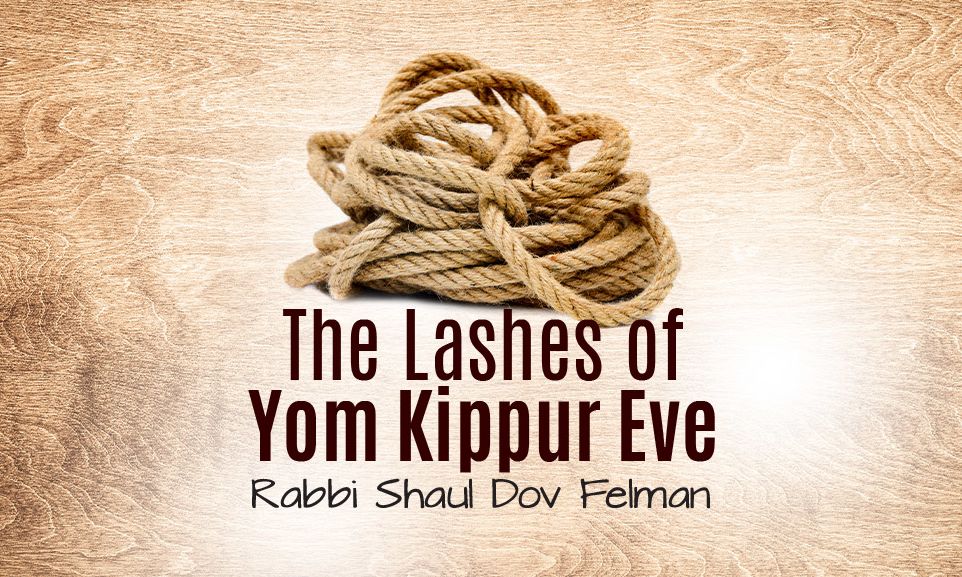
The Lashes of Yom Kippur Eve
Many Ashkenazi Jews have the custom of each person giving a friend thirty-nine mock lashes on Yom Kippur eve, reminiscent of the lashes in the Holy Temple…

 A custom that has been passed down by the “Chachmei Ashkenaz” is that on Erev Yom Kippur a “mock” whipping takes place in the synagogue, where one whips his friend exactly in the fashion that it was done in the time of the Sanhedrin. The “Kol Bo” makes a stipulation that he who did not perform this on Erev Yom Kippur may not proceed to do this on Yom Kippur itself. This minhag is still kept by certain congregations. Let us perhaps attempt to shed some light on the inner meaning of this seemingly strange custom.
A custom that has been passed down by the “Chachmei Ashkenaz” is that on Erev Yom Kippur a “mock” whipping takes place in the synagogue, where one whips his friend exactly in the fashion that it was done in the time of the Sanhedrin. The “Kol Bo” makes a stipulation that he who did not perform this on Erev Yom Kippur may not proceed to do this on Yom Kippur itself. This minhag is still kept by certain congregations. Let us perhaps attempt to shed some light on the inner meaning of this seemingly strange custom.
The Gemara in Makkos 22b states, ”How foolish are those people that stand in front of a Sefer Torah and do not stand for a great man (reference to a Talmid Chochom), for the Torah says forty and the Rabbis came and reduced one.” In other words, the Torah for various transgressions set the punishment as forty lashes and the Rabbis came and made the modification to thirty nine. On a side point the Maharal points out that here lies a tremendous foundation, for there is no way in the world that someone would possibly be able to interpret forty as being thirty nine. No commentator, even if he is standing on his head can convince anyone that the meaning of forty is truly thirty nine. However, our Chazal are not merely interpreters of the Torah-they are the Torah itself. A Talmid Chochom is essentially Torah. Therefore he can truly say that the meaning of forty is thirty nine.
Therefore, foolish is the person that stands up for a Sefer Torah but not for a Talmid Chochom. What remains to be understood is why did the Torah choose to teach me that a person receives thirty nine whips in such a strange way. If the Torah means thirty nine, why does it say forty. After all, one should say what he means and mean what he says. The Maharal deals with this intriguing point as follows. The reason he explains a person is sentenced with forty lashes is because Hashem, we know, takes forty days to create the embryo. Seeing as Hashem troubled himself for forty days with the “Yetziras Havlad” and the person by sinning undid the purpose of his creation, it is befitting that he should be whipped forty times, one for each of those forty days. The Maharal adds that in creating the embryo, for thirty nine days Hashem creates the body (the Guf) and on the fortieth day blows in the soul-the Neshama. As far as sentencing is concerned the whole person sinned and therefore the whole unit consisting of the Guf and Neshama has to be punished. However, the Maharal continues, when it comes down to the whipping itself ,one by one, representing day by day, when we come to the thirty ninth day the Guf has been totally atoned for. What remains is only the Neshama. The Neshama is pure. The Neshama did not sin, so it need not be punished.
Klal Yisroel undergoes a period of atonement of forty days, from Rosh Chodesh Elul until Yom Kippur. Forty days to atone for the forty days that Hashem troubled himself with the formation of man that finds himself now in a desperately sinful situation. On the thirty ninth day we whip, attesting to the punishment that the Guf would ultimately need to receive. However he who did not receive lashes on Erev Yom Kippur may not be whipped on Yom Kippur because Yom Kippur is the fortieth day, which corresponds to the Neshama and the Neshama need not be whipped.
This is the way we have to perceive the wonderful present Hashem gave us entitled Yom Kippur – the day of the Neshama. We return to our essence.
The concept behind immersion in a Mikvah is explained by Reb Tzadok as follows.
When a person immerses himself in a body of water in which he can’t have existence for any lengthy period of time. When he comes out of that situation he must be a new being. Similarly one may claim that is the idea behind the prohibitions of fasting and such on Yom Kippur. A person enters a situation when he cannot continue to exist in, so when the day is out he is surely a new being. Truly, one need not totally become a new being. After a full day of fasting and intense prayer a person strips himself of physicality and all that really remains on this very special day is the Neshama. He has returned to his true essence.
May Hashem bless us all with a Gmar Chasima Tova, may we merit true repentance and be able to get in touch with our true essence-that very special Neshama that was given to us by Hashem himself.
***
Reprinted with kind permission of www.neveh.org



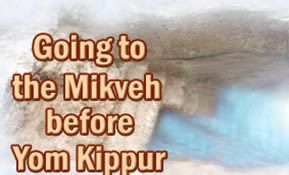
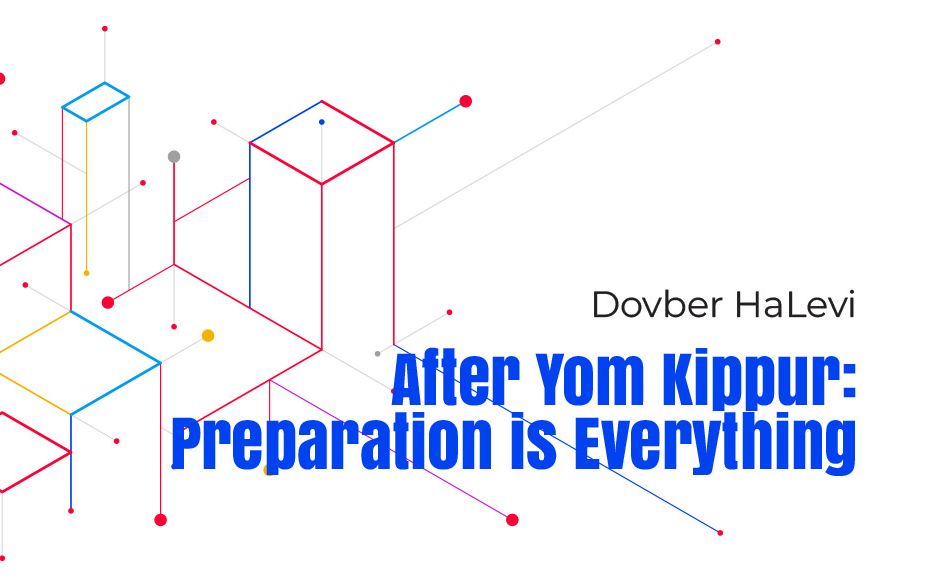
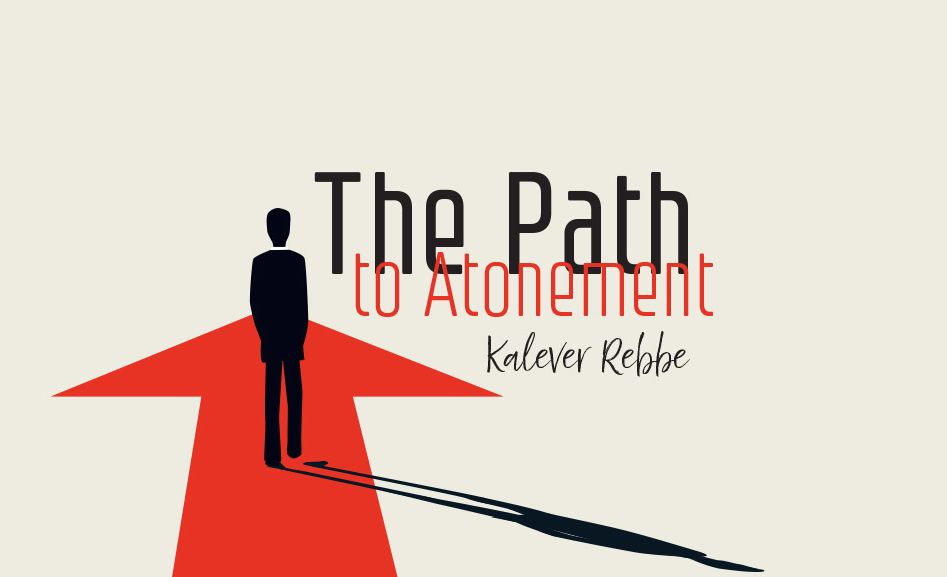



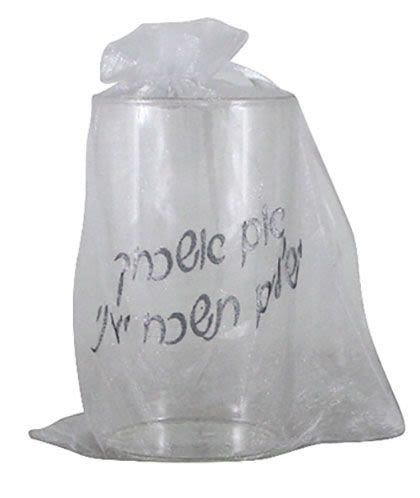
Tell us what you think!
Thank you for your comment!
It will be published after approval by the Editor.